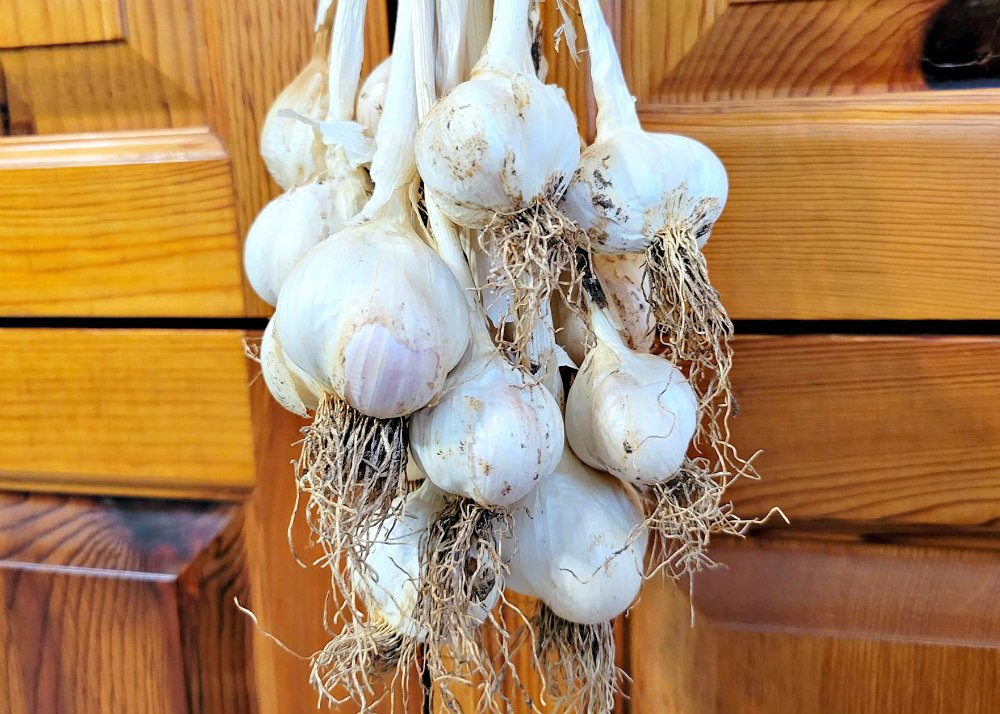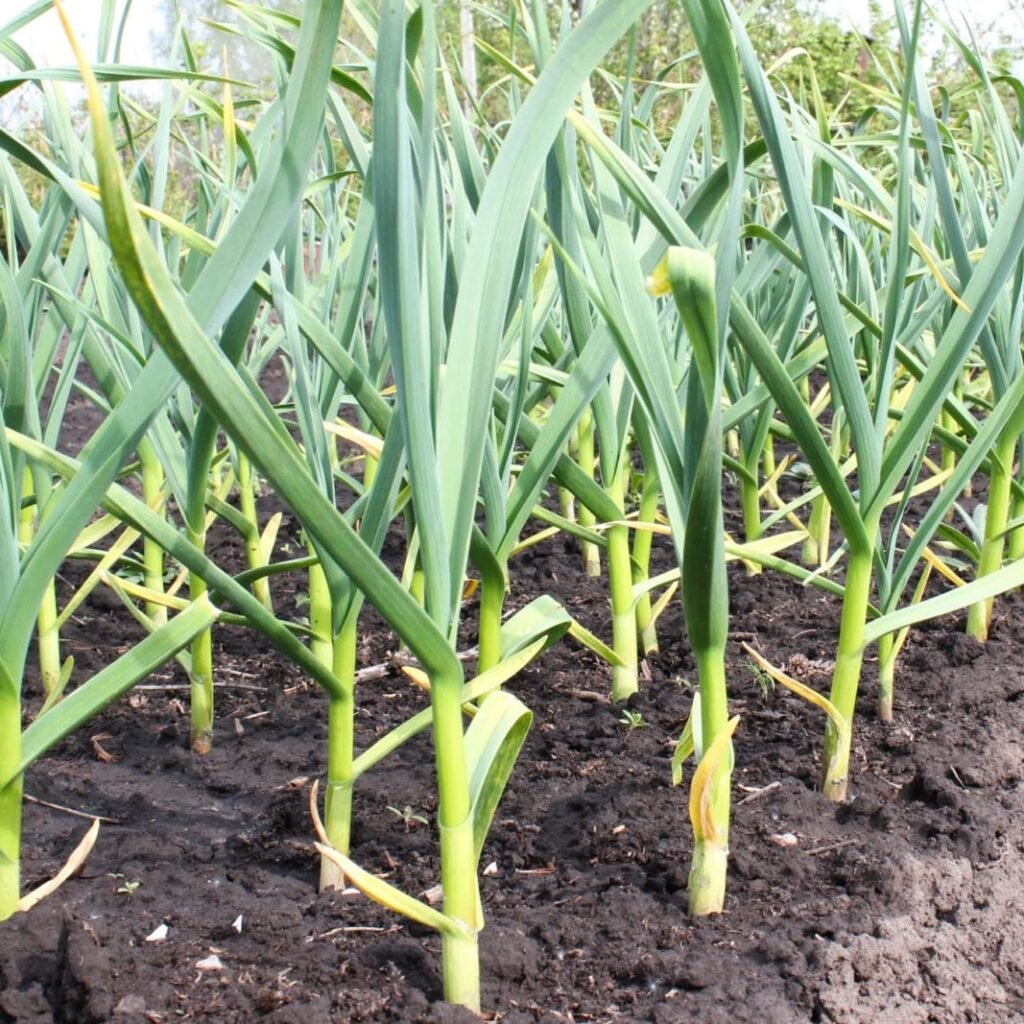Garlic (Allium sativum) is a versatile and highly valued crop in kitchens worldwide. Known for its robust flavor, health benefits, and culinary uses, garlic is also remarkably easy to grow at home, even during the winter months. Planting garlic in winter allows the cloves to establish roots in cool soil, leading to a strong, healthy plant and a bountiful harvest in late spring or early summer.
This guide presents a detailed, step-by-step approach to planting garlic in winter, covering soil preparation, planting techniques, care, and harvesting tips. By following these six easy steps, gardeners can successfully cultivate garlic and enjoy fresh, homegrown bulbs.
Step 1: Selecting the Right Garlic Variety

Choosing the right garlic variety is critical for winter planting. Garlic comes in two main types: hardneck and softneck.
- Hardneck Garlic:
- Suitable for colder climates.
- Produces a flowering stalk called a scape.
- Typically has larger cloves but fewer per bulb.
- Flavors are more intense and robust.
- Softneck Garlic:
- Best for milder climates.
- Produces more cloves per bulb.
- Easy to braid and store for long periods.
- Flavors are milder, ideal for everyday use.
- Seed Source and Quality:
- Use certified disease-free garlic bulbs from reputable suppliers.
- Avoid using supermarket garlic, as it may carry diseases or be treated to prevent sprouting.
Selecting the appropriate variety ensures successful winter planting, strong root establishment, and flavorful bulbs at harvest.
Step 2: Preparing the Soil
Garlic thrives in well-draining, fertile soil with a neutral to slightly acidic pH (6.0–7.0). Proper soil preparation ensures healthy roots and reduces the risk of disease.

- Choosing a Planting Site:
- Select a sunny location with at least 6–8 hours of direct sunlight per day.
- Avoid areas prone to waterlogging, as garlic is susceptible to rot in overly wet soil.
- Soil Enrichment:
- Work in well-rotted compost, aged manure, or organic matter to improve fertility.
- Add balanced fertilizers or bone meal to supply phosphorus for strong root growth.
- Soil Texture and Drainage:
- Garlic prefers loose, sandy-loam soil that allows roots to expand freely.
- Avoid heavy clay soils or amend them with sand and organic matter to improve drainage.
Well-prepared soil provides the foundation for healthy garlic growth and ensures winter-planted cloves survive cold conditions.
Step 3: Preparing Garlic Cloves for Planting

Properly preparing garlic cloves increases the chances of successful sprouting and reduces the risk of disease.
- Separating Cloves:
- Gently separate the garlic bulb into individual cloves, leaving the papery skins intact.
- Use only large, healthy cloves for planting; small or damaged cloves produce weaker plants.
- Optional Pre-Planting Treatments:
- Soak cloves in water for a few hours to encourage early root growth.
- Dust cloves with horticultural sulfur or a mild fungicide to prevent fungal infections.
- Handling with Care:
- Avoid damaging the base of the clove, as this is where roots will develop.
Proper preparation ensures vigorous growth and maximizes yield potential.
Step 4: Planting Garlic in Winter

Winter planting involves placing garlic cloves in the soil before the coldest months, allowing roots to establish while the plant remains dormant above ground.
- Planting Depth:
- Plant cloves 2–3 inches deep with the pointed end facing upward.
- Depth may vary slightly depending on soil type; sandy soil may require slightly deeper planting.
- Spacing:
- Space cloves 4–6 inches apart in rows with 12–18 inches between rows.
- Adequate spacing ensures sufficient airflow, reduces disease risk, and allows room for bulb expansion.
- Mulching for Winter Protection:
- Cover planted cloves with 2–4 inches of mulch, such as straw, leaves, or pine needles.
- Mulch insulates soil, prevents temperature fluctuations, conserves moisture, and suppresses weeds.
- Watering After Planting:
- Water the soil lightly after planting to settle cloves into the ground.
- Avoid overwatering, as excessive moisture during winter can lead to rot.
Winter planting enables garlic to develop strong roots before the spring growth surge, resulting in larger, healthier bulbs.
Step 5: Caring for Garlic During Winter

Though garlic is hardy, it still requires proper care during winter to ensure a successful harvest.
- Watering:
- Reduce watering during cold months, as garlic is dormant and excess moisture can lead to rot.
- Resume regular watering in early spring when new growth appears.
- Mulch Maintenance:
- Replenish mulch if it decomposes or is displaced to maintain insulation and protect cloves from frost.
- Weed Control:
- Keep the garlic bed free of weeds, which compete for nutrients and can harbor pests.
- Hand-pull weeds or use organic mulches to suppress growth naturally.
- Pest and Disease Monitoring:
- Monitor for pests such as onion maggots or fungal diseases like white rot.
- Remove affected plants immediately to prevent spread.
Proper winter care ensures garlic emerges strong and healthy in spring, ready for rapid growth and bulb formation.
Step 6: Harvesting and Storing Garlic
Harvest timing and post-harvest care are critical for preserving flavor, storage life, and bulb quality.
- Signs of Maturity:
- Garlic is ready to harvest when lower leaves turn brown, but upper leaves remain green.
- Typically, winter-planted garlic matures in late spring or early summer.
- Harvesting Technique:
- Gently loosen the soil around bulbs with a garden fork.
- Lift bulbs carefully to avoid bruising or cutting the stems.
- Curing Garlic:
- Cure bulbs in a dry, well-ventilated area for 2–3 weeks.
- Hang bulbs or spread them on racks out of direct sunlight.
- Proper curing prevents mold, extends shelf life, and enhances flavor.
- Storage:
- Store cured garlic in a cool, dry, dark location.
- Avoid refrigeration unless necessary; garlic can last 6–12 months when stored properly.
Successful harvesting and storage maximize yield and ensure fresh, flavorful garlic throughout the year.
Additional Tips for Growing Garlic Successfully
- Companion Planting:
- Plant garlic near tomatoes, peppers, or fruit trees to repel pests naturally.
- Avoid planting near beans or peas, which may hinder growth.
- Regular Observation:
- Monitor for early signs of pests or diseases, especially during wet conditions.
- Succession Planting:
- Plant in phases to ensure continuous supply throughout the growing season.
- Organic Fertilizers:
- Side-dress with compost or organic fertilizers in early spring for vigorous growth.
- Winter Mulch Variety:
- Experiment with different mulching materials like straw, hay, or shredded leaves to optimize protection and soil fertility.
These additional practices help maximize garlic yield, maintain plant health, and create a sustainable home garden system.
Benefits of Planting Garlic in Winter
- Larger Bulbs:
- Winter planting encourages strong root development, leading to bigger, healthier bulbs.
- Disease Resistance:
- Cold soil discourages certain pests and pathogens that affect garlic.
- Early Harvest:
- Garlic planted in winter matures earlier than spring-planted bulbs.
- Nutritional and Culinary Value:
- Fresh, homegrown garlic is rich in vitamins, antioxidants, and natural compounds beneficial for health.
- Cost Savings:
- Growing garlic at home reduces the need to purchase expensive, often chemically treated bulbs.
Winter-planted garlic offers superior flavor, higher yields, and long-term storage benefits, making it an ideal choice for home gardeners.
Conclusion
Planting garlic in winter is a practical, rewarding, and simple way to cultivate this essential kitchen staple at home. By following these six easy steps—selecting the right variety, preparing the soil, preparing cloves, planting properly, providing winter care, and harvesting correctly—gardeners can achieve a healthy, abundant crop.
Winter planting allows garlic to establish strong roots before spring, resulting in larger, more flavorful bulbs with extended storage potential. With consistent attention to soil health, pest management, and proper harvesting techniques, home gardeners can enjoy fresh, organic garlic throughout the year.
Growing garlic in winter is not only an opportunity to produce delicious, nutrient-rich food but also a step toward sustainable gardening and self-reliance in the kitchen. By integrating these practices, gardeners can cultivate garlic like professionals, enjoying the satisfaction of nurturing plants from the dormant winter stage to a thriving harvest in late spring.

Leave A Comment